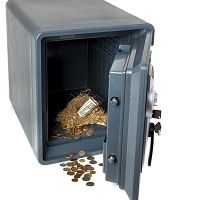- Revenue Cycle Management
- COVID-19
- Reimbursement
- Diabetes Awareness Month
- Risk Management
- Patient Retention
- Staffing
- Medical Economics® 100th Anniversary
- Coding and documentation
- Business of Endocrinology
- Telehealth
- Physicians Financial News
- Cybersecurity
- Cardiovascular Clinical Consult
- Locum Tenens, brought to you by LocumLife®
- Weight Management
- Business of Women's Health
- Practice Efficiency
- Finance and Wealth
- EHRs
- Remote Patient Monitoring
- Sponsored Webinars
- Medical Technology
- Billing and collections
- Acute Pain Management
- Exclusive Content
- Value-based Care
- Business of Pediatrics
- Concierge Medicine 2.0 by Castle Connolly Private Health Partners
- Practice Growth
- Concierge Medicine
- Business of Cardiology
- Implementing the Topcon Ocular Telehealth Platform
- Malpractice
- Influenza
- Sexual Health
- Chronic Conditions
- Technology
- Legal and Policy
- Money
- Opinion
- Vaccines
- Practice Management
- Patient Relations
- Careers
Risk and Retirement - Are You Protected?
Physicians spend an inordinate amount of time and incomprehensible amounts of money on insurance. But one of the biggest assets many physicians leave uninsured is their retirement accounts, specifically their IRAs.

As a physician, you probably spend an inordinate amount of time and incomprehensible amounts of money on insurance. Medical malpractice has changed the landscape and permeates all facets of your profession. On top of it, physicians have to carry insurance for their personal lives including home, auto, and life.
But one of the biggest assets many physicians leave uninsured is their retirement accounts, specifically their IRAs.
When looking at your IRA, you need to analyze the risk. Specifically, if your portfolio is heavily weighted in stocks there are multiple types of risk including:
1. A specific company having a problem.
2. A sector having a problem.
3. The overall market having a problem
Diversification can help, but there are other ways to insure your retirement accounts, including trading options to insure your portfolio. Over the years, options have often been given the undeserved reputation as being only vehicles for speculation. While it is certainly possible to speculate with options, it is just as easy to speculate trading penny stocks.
A variety of option strategies can be employed in an IRA account as insurance including a collar.
A collar (long stock, long puts and short calls in equal quantity) is a strategy that combines a covered call and a protective put. Consider establishing a collar if you are primarily concerned with protecting a position at minimal expense. A collar provides temporary protection against a downturn in the equity position, but also removes all upside potential above the call strike price. Because it is generally unwise to hold a long stock position if you think the long-term prospects are poor, you should only consider employing this strategy if you feel the long-term prospects of your stock are still favorable.
Probably the biggest benefit to trading a collar is that it can often be done for little or a relatively small amount of capital. This occurs because the proceeds received from the sale of the covered calls can be used to finance some or all of the purchase costs of the protective puts. In some instances, you may even be able to receive a net credit. Unlike many other option strategies, collars tend to get less expensive as you go farther out into the future. The most common use of a collar is when you want to protect an unrealized profit, but you are not yet ready to sell the position. A properly structured collar can help protect against a downturn while attempting to postpone capital gains obligations.
Putting strategies to work like collars are beneficial to use in a traditional IRA because taxes on any capital gains earned are typically deferred. Assuming profitability, by retaining all of the profits in the account while you are still in your working years, you may be able to accumulate assets more quickly and grow your account faster. Keep in mind, though, that you will be taxed (at ordinary income tax rates) on all distributions and profits when you withdraw them after you retire, so you won’t get the benefit of a lower capital gains tax rate, regardless of how long you may have owned the securities.
By contrast in a Roth IRA, contributions are made with after-tax dollars, and the earnings are generally tax-free at the time you withdraw them from the account. Which one is most beneficial to you will depend on a number of factors, such as your income, current and expected tax bracket, level of contributions, and how many years you have until retirement.
For free information and resources about Trading in your IRA, click here: TraderPlanet PRIME.
Julie Saltzman has been involved in the trading industry for over 25 year as a writer, a floor trader and an educator. Saltzman began her career as a trader for Banque National de Paris in the currency option pits of the Chicago Mercantile Exchange and has spent the past five years exclusively in the trading education space. She is passionate about helping to level the playing field for all investors and is currently the Senior Project Manager for TraderPlanet PRIME, an online portal that provides exclusive interactive education and actionable trade strategies for your IRA.
